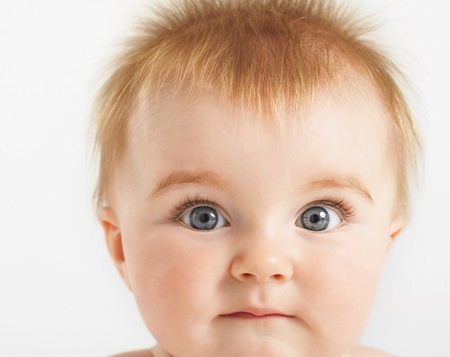As your baby grows and develops, so does his portfolio of playtime activities. Children of all ages learn through play, and with each stage of development come new opportunities for children to explore the world and how they fit in it. As you plan your child’s playtime take into account your child’s age and abilities to maximize both learning and fun. Here are toys, games, and activities that suit your child age by age.
How Alter Play as Baby Grows
-
Play for a Baby from 0 - 3 Months Old
During the first months, your baby’s playtime happens during his interactions with you.
Tools of Play
- high-contrast plush toys
- hanging mobiles
- cloth books
- rattles
Games and Activities
- Simple, repetitive rhymes like This Little Piggy and Little Robin Redbreast
- Simple, repetitive songs like Twinkle, Twinkle
- Finger games like Good Morning to You! and These are Baby’s Fingers
-
Play for a Baby between 3 - 6 Months Old
During this stage of development, your baby’s playtime stems from his curiosity about the world.
Tools of Play
- soft, textured toys
- unbreakable mirrors
- board books
- soft blocks
Games and Activities
- Simple action rhymes like Open and Shut Them and Eeny, Meeny, Miny, Moe
- Simple action songs with clapping and animated facial expressions like If You’re Happy and You Know It
- Finger games like The Itsy Bitsy Spider
-
Play for a Baby between 6 Months - 1 Year Old
During the second half of the first year, your baby’s growing understanding of cause and effect and object permanence will drive his mode of play.
Tools of Play
- soft balls
- squeeze toys
- nesting cups
- egg shakers
Games and Activities
- Hide and seek type games like Peek-a-Boo and So Big!
- Lap songs that allow for the anticipation of a surprise like Ride a Little Pony and Trot Trot to Boston
-
Play for a Toddler between 1 - 2 Years Old
During year one and two, your child is on the move and his play will be driven by his desire to move, shake, rock and roll. He is developing his physical skills and learning how to control his motor activity.
Tools of Play
- stacking toys
- dump and fill toys
- blocks
- shape sorters
- picture books
Games and Activities
- Movement games like Duck, Duck, Goose and Ring Around the Rosie
- Songs and movement games like Head, Shoulders, Knees and Toes and Beehive
-
Play for a Child between 2 - 4 Years Old
During the toddler years, your child’s personality is in bloom and she’s beginning to become interested in playing alongside others.
Tools of Play
- large beads and string
- big puzzles
- simple board games
- simple story books
- instruments
Games and Activities
- Games that encourage group play focused on movement and listening like Simon Says and Freeze Dance
- Songs with lots of opportunities for individual participation within a group like The Wheels on the Bus and Red Light, Green Light
-
Play for a Child between 4 - 6 Years Old
During the preschool and early elementary school years, play is driven by your child’s increasingly active imagination. Pretend play becomes a major theme in boosting your child’s imagination and helping her develop social and emotional skills.
Tools of Play
- dress up clothes
- pretend play props
- puppets
- fairy tale books
- simple card games
Games and Activities
- Games that encourage observation like I Spy and Follow the Leader
- Songs that focus on counting and have repetitive phrasing like Five Little Monkeys and One, Two, Buckle My Shoe
- Pretend games like House
-
Play for 6 Year Olds and Beyond
By the time children hit age 6, playtime is most often enjoyed with friends; kids are learning how to share, good sportsmanship, and how to cooperate with others
Tools of Play
- story books
- board games
- bicycle and helmet
- sports equipment
- puzzles
- dress up clothes
- puppets
Games and Activities
- Group games focused on cooperation or teamwork like Telephone and Tag
- Hand clapping and rhyming songs like Miss Mary Mack and Miss Susie
- Coordination games like Red Rover
- Pretend games like Tea Party or House
